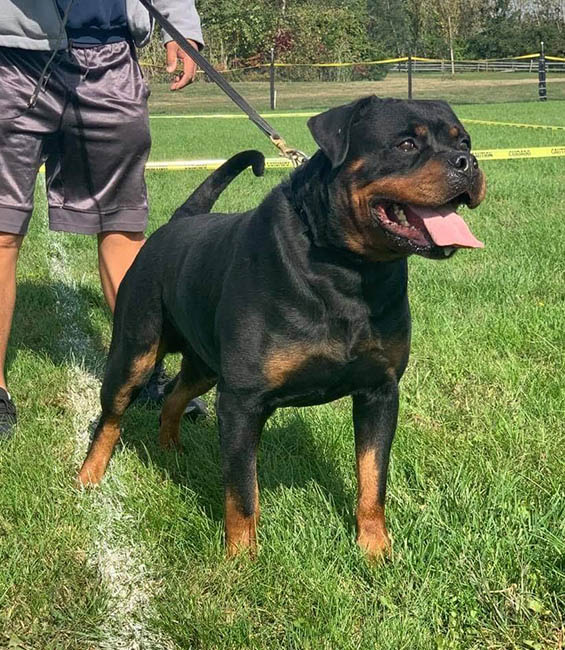
breed information
The Rottweiler has origins that are unknown, however it probably descended from the Italian Mastiff. During the Middle Ages, the Rottweiller was commonly used as a herd dog. The Rottweiler became nearly extinct in the 1800’s, but made a wonderful comeback in the early twentieth century by breeders in Stuttgart. The Rottweiler today is used for a variety of things such as tracking, herding, watch dogging, police work, obedience trails, as well as guarding which he does exceptionally well in.
Character
The Rottweiler can be a very fun loving dog, however he is very powerful and can be serious at times. Early obedience training and socialization is a must. This breed can be very territorial and protective of their family and their environment. Rottweilers can be very intimidating, still retaining an undeserving reputation as a vicious and/or mean dog, however they do extremely well in a family environment.
Does your Rottweiler bark, howl, and cry whenever you leave the house? Separation anxiety is extreme anxiety experienced by your dog when you are away from him.
temperament
The temperament of the Rottweiler can vary. Some can be very affectionate and somewhat of a clown, while others can be bullies. It is critical that this breed is socialized at an early age. Rottweilers can do well with children if raised around them, but should be supervised around small children due to their sheer size and power. The Rottweiler can do well around other dogs, however can be somewhat combative and can show aggression if not socialized properly as this is a very protective breed of both their family and their territory.
care
The Rottweiler has a short and glossy coat that is relatively easy to groom. An average shedding breed, brushing with a firm bristle brush regularly should remove any excess hair or dead hairs. Bathing too often will remove the natural oils from the coat and/or skin. Dry shampooing is used by many Rottweiler owners as well as breeders so they are not to remove the essential oils in this breeds coat.
If your dog is displaying behavior uncharacteristic of his normal actions, call the Vet.
coat
The Rottweiler has an outer coat that is short, straight, dense and of medium length. The coat should always be coarse to the touch. The undercoat should be present around the neck and thighs. Coat should never be wavy or curly. The Rottweiler has one of the most noticeable coats with the distinct black and bright rust coloring along their legs, underbelly and muzzle.
training
Rottweilers are very eager to earn and will excel if given the opportunity. Obedience training is a must as this breed can become destructive without enough stimulation. A firm and dominant hand must be used when training this powerful breed. The Rottweiler is extremely intelligent and does well in many different sports and trials, but can also be stubborn. Obedience classes are recommended, but not always required. Teaching your dog to sit, lie down, and stay is vital to the training of your new puppy. There are several accepted methods of house training your new Rottweiler puppy. Consider crate training if you need to adapt your dog to a safe and confined environment for various safety and comfort reasons.
activity
The Rottweiler should have at least a large sized yard. They aren’t really active indoors, so they need plenty of exercise outdoors, off lead preferably. This breed loves long walks and should have at least two long walks per day totaling at least two hours of exercise per day. Socialization is one of the single most important things you can do for your puppy.
weight
Male: 85-135; Female: 80-100 lbs
height
Male: 24-27; Female: 22-25 inches